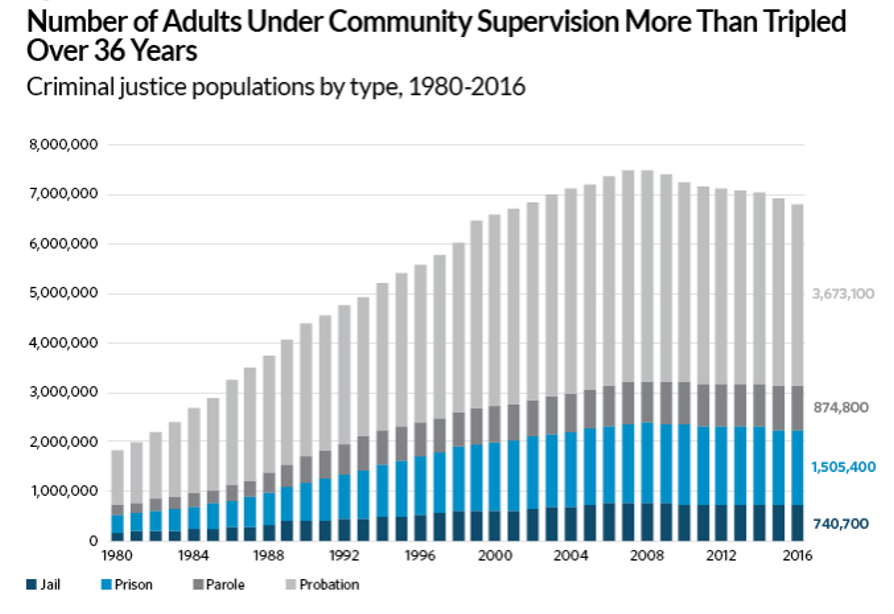Community corrections agencies are a vital part of the criminal justice system. Yet, they are often understaffed and underfunded due to the growing number of individuals released on probation and parole.
Over the past four decades, the U.S. community supervision population has increased by more than 240%.1 This includes higher-risk individuals who require more time and attention during their transition.2 The graph below demonstrates the number of individuals in jail, prison, probation, and parole.

Implications for Community Corrections
As the community corrections industry grows more complex and demanding, agency and officer support is vital for public safety. Officers today assume more responsibilities from traditional supervision practices to case management, and the profession of community supervision continues to evolve. This can lead to officer burnout and turnover, which is costly for agencies. In addition, it can result in reduced services for individuals and higher recidivism rates.
How Do Officers Spend Their Time?
While the statistics alone are convincing, it is helpful to break down the amount of time officers delegate to each task. For example, in 2017, the Research Triangle Institute studied probation and parole officers’ time expenditure. The results of the study indicated that 52% of officers’ work hours were spent on administrative tasks and case management.3
The study outlined probation and parole officer duties:
- Risk assessments
- Address verifications/changes to client schedule
- Referrals and substance program results
- Case notes
- Collecting documents
- Collecting payments
- Data entry
It is important to note that the study did not include activities unrelated to case management, such as training, conferences, court appearances, and staff meetings.
Technology’s Impact on Officer Duties
It is not just about the rising caseloads and mounting paperwork. Technology enables officers to spend more time in the field—speaking with and checking in with clients. And while technology integration aims to make community supervision more manageable and effective, it can initially create additional work for officers. Agencies and officers need to know how the electronic monitoring technology functions, including the installation process, benefits vs. flaws, troubleshooting, analyzing reports, etc.
Expanding Resources & Enhancing Efficiency
BI Incorporated provides corrections agencies with quality monitoring services, administrative support, and data management tools. We understand how time management tools can help alleviate parole and probation officer workload. BI Agency Assist® is a high-touch service option designed to increase agency coverage. With growing caseloads, centralized data and streamlined case management are vital to keeping communities safe and officers efficient.
1 Bureau of Justice Statistics, “Annual Probation Survey and Annual Parole Survey” (1980 2016), https://www.bjs.gov/index.cfm?ty=pbdc&dcid=271&iid=1.
2 https://journals.sagepub.com/doi/full/10.1177/0093854818790299
3 DeMichele, M., Payne, B. (December 2017). Taking officer time seriously: A study of the daily activities of probation officers. Probation Journal. 65(1):026455051774835. DOI: 10.1177/0264550517748358

